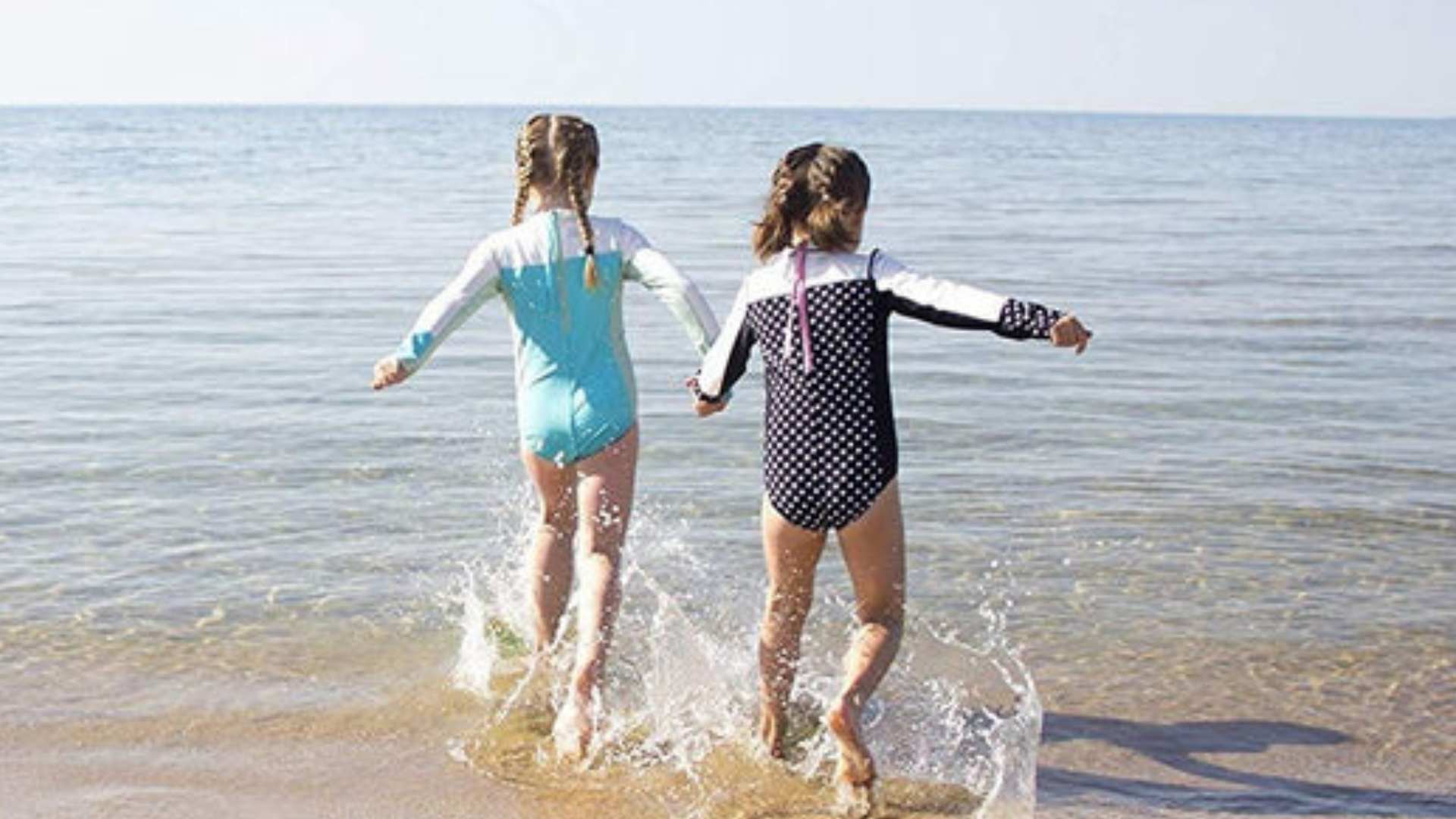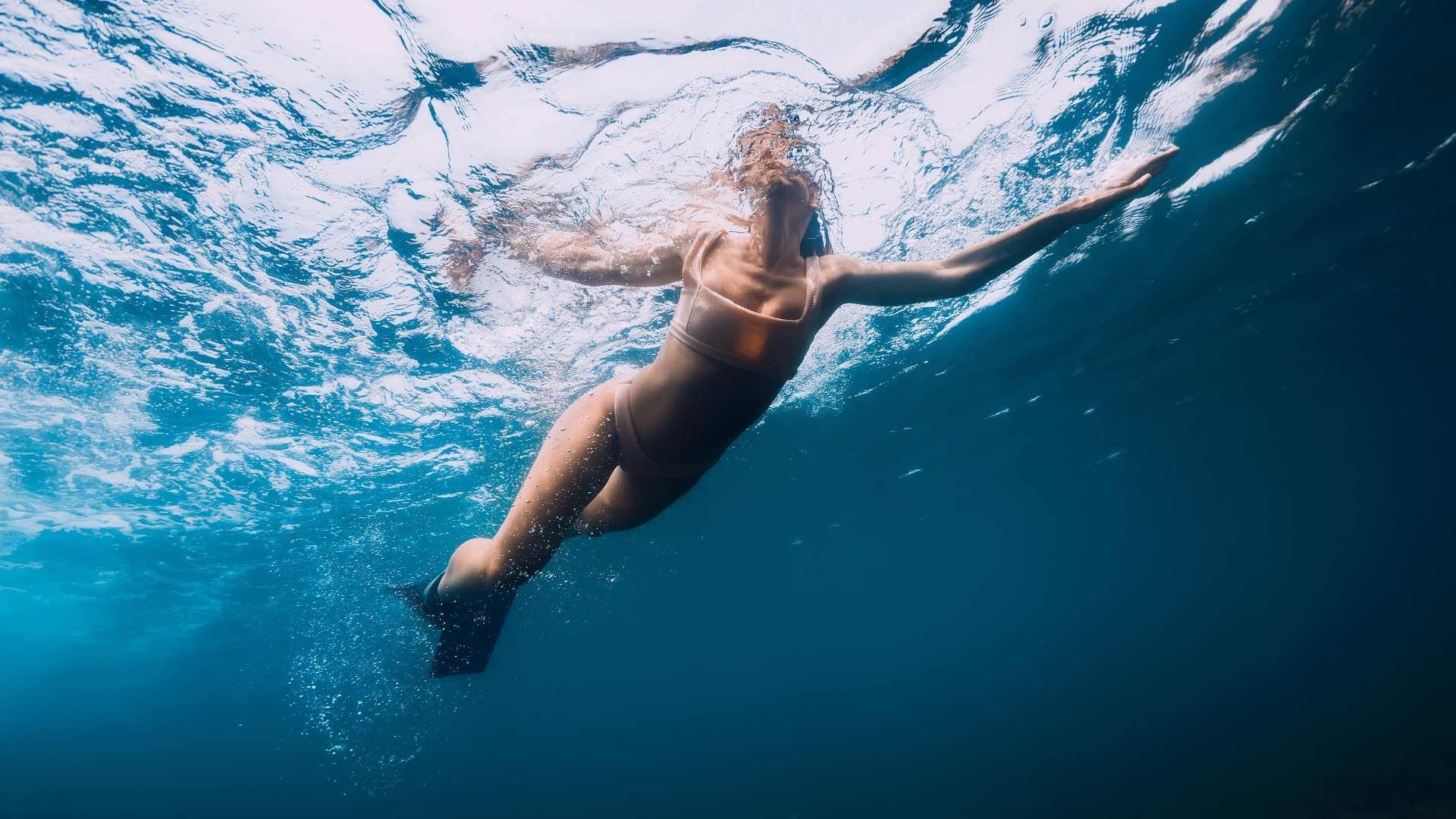
Will a rash guard give any warmth?
Rash guards might provide some thermal protection, but they aren’t meant to keep you warm. Their primary function is to protect your skin from abrasion and sun.
We’ll cover rash guards, when you should wear them, and when you should opt for a wetsuit instead.
Quick links:
Do rash guards provide any warmth?
Stay protected and comfortable with SwimZip's rash guards and sun-protective swimwear; perfect for all-day fun in the sun. Enjoy UPF 50+ protection and stylish, functional designs for the whole family.
About rash guards
Rash guards, also known as rash vests or simply "rashies," are form-fitting athletic shirts for water activities. Surfers first popularized these versatile shirts to stop surf rash, but now people wear them for many water sports and beach activities.
At their core, rash guards are protective clothing. They're typically made from nylon, polyester, or spandex materials, often blended for optimal performance. These fabrics offer several benefits:
- Sun protection: Our rash guards provide UPF 50+ sun protection. They block out at least 98% of harmful UV rays, keeping your skin safe during long hours in the sun.
- Rash protection True to their name, rash guards stop skin irritation from sand, abrasion from surf wax, or long contact with rough surfaces.
- Quick-drying: The synthetic materials used in rash guards dry faster than traditional cotton shirts, keeping you comfortable both in and out of the water.
- Flexibility: Rash guards move with your body, giving you unrestricted motion for swimming, surfing, or any other water activity.
You'll find rash guards in different styles, from long-sleeve rash guards that offer maximum coverage to short-sleeve options for a greater range of motion. Some feature convenient elements, such as SwimZip's signature full-front zipper, which simplifies putting them on and taking them off.
While thermal protection isn’t a standard rash guard trait, some people believe these garments provide insulation. But do rash guards really keep you warm?
How rash guards provide warmth
While rash guards aren't thermal garments, they can offer a degree (or two) of warmth in certain conditions. This warmth comes from several factors:
- Insulation
- Material properties
- Coverage
Insulation
Rash guards are a protective layer between your skin and the water. This extra layer traps a thin film of water against your body, which your body heat warms up. In essence, rash guards create a mini wetsuit effect, though not pronounced like actual wetsuits.
Material properties
SwimZip rash guards use synthetic fabrics such as nylon and spandex. These materials retain some warmth even when wet, unlike cotton which becomes cold and heavy. The snug fit of rash guards also contributes to their warming effect by minimizing water circulation next to your skin.
Coverage
Long-sleeved rash guards provide more coverage, which translates to more warmth. They shield a larger portion of your body from direct contact with cold water, maintaining your body heat more effectively than sleeveless or short-sleeve designs.
Note: The warmth provided by rash guards is modest. In colder waters, you'll need additional warmth.
When to wear a rash guard
Rash guards give you a layer of protection against painful rashes, irritation, and sun exposure. You can use them in the following situations:
- Swimming: A rash guard adds a layer of sun protection for outdoor swimming. This matters most during peak UV hours or for long swim sessions.
- Snorkeling, water skiing, and scuba diving: Rash guards shield you from jellyfish stings and coral scrapes. They also add a bit of warmth in cooler water.
- Beach days: Even if you're not in the water, a rash guard blocks UV lights while you relax on the sand.
- Water parks: Rash guards prevent skin burns from water slides and protect against chlorine irritation.
- Paddling sports: For kayaking or stand-up paddleboarding, rash guards block the sun and reduce chafing from life jackets.
- Cool weather water activities: While not a wetsuit, a rash guard adds a thin layer of warmth on breezy days or in chilly water.
- After sun exposure: If you've had too much sun, a rash guard provides cover for tender skin.
- Workouts outdoors: The lightweight, breathable fabric keeps you cooler during workouts outdoors.
- Sports activities: They are also commonly worn in grappling sports such as mixed martial arts (MMA), Brazilian jiu-jitsu, wrestling, and judo.
- Around the house: Rash guards allow gardeners, car washers, and outdoor chore doers to stay protected.
Rash guards vs wetsuits
Rash guards and wetsuits are both protective swimwear, but they serve somewhat different purposes. Use this table to figure out which one is right for you:
|
Rash guard |
Wetsuit |
|
|
Main purpose |
Protects against skin irritation and sunburn |
Provides insulation and warmth in cold water |
|
Material |
Thin, stretchy fabrics (spandex, polyester, nylon) |
Thick neoprene for thermal insulation |
|
Thickness |
Very thin (less than 1mm) |
Typically 2–7mm depending on water temperature |
|
Warmth |
Minimal warmth, not for insulation |
Retains body heat and keep you warm |
|
Water retention |
Water passes through freely |
Traps a thin layer of water to warm with body heat |
|
Best for |
Warm water activities such as surfing, swimming |
Cold water activities such as diving, surfing, or kayaking |
|
UV protection |
Provides UPF protection from the sun’s rays |
Provides UV protection but focuses on warmth |
|
Flexibility |
Highly flexible, gives full range of motion |
Less flexible because of thicker material |
|
Drying time |
Quick-drying due to lightweight fabric |
Takes longer to dry because of the thick neoprene |
Choose Swimzip for your swimwear
At SwimZip, our high-quality rash guard selection will make you look and feel your best. Our rash guards are fashionable and provide complete sun protection, blocking 98% of the sun’s harmful UVA & UVB rays. They are made of the highest-rated, most comfortable UPF 50+ sun-protective fabric, and are quick-drying and chlorine-resistant.
Whether you're planning a beach day or a swimming pool party, our rash guards are a must-have addition to your wardrobe. They can also be a go-to piece of gear for surfers and water sports enthusiasts.
Choose from long and short-sleeved rash guards for men, women, and children, available in a variety of styles, colors, and sizes. There's a perfect fit for everyone in our rash guard collection.
Rash guards FAQ
Are rash guards the same as swim shirts?
Rash guards and swim shirts are similar but differ in many important ways. Rash guards fit snugly and offer more sun protection with UPF ratings. Swim shirts have a looser fit and may lack UPF protection. Rash guards excel at preventing chafing, while swim shirts focus on general coverage and modesty.
Do rash guards help with cold water?
Rash guards provide minimal insulation in cold water. They offer a thin layer that traps a small amount of water next to your skin, which your body warms. For significant cold water protection, you'll need a wetsuit. Rash guards work best as a base layer under a wetsuit for extra warmth.
Do kids get hot in rash guards?
Kids rarely overheat in rash guards. The quick-drying material wicks moisture away from the skin, which cools them down. In hot weather, wet rash guards act like air conditioning. For warm climates, choose light colors and looser fits. Always watch for signs of overheating during intense activity.
Can you swim in a rash guard?
You can swim in a rash guard. Rash guards don't impede your movement in the water. Their snug fit and stretchy material let you swim freely. Many swimmers prefer rash guards for added sun protection during outdoor swims. The quick-drying fabric also feels comfortable when you exit the water.
Is a rash guard the same as a compression shirt?
Rash guards and compression shirts are similar but serve different primary purposes. Rash guards are for water activities and protect against rashes and UV light. Compression shirts are made to provide muscle support and may not have the same level of UV protection and are not the best option for swimming.
How do rash guards affect body temperature?
Rash guards have a minimal effect on body temperature. In hot water, the quick-drying material wicks sweat away, cooling you down. For colder conditions, rash guards provide a thin layer of insulation, preserving some body warmth.
Are rash guards good for outdoor activities besides swimming?
Rash guards work well for many outdoor activities. Their sun protection and quick-drying qualities benefit hikers, runners, and other outdoor enthusiasts. The durable material resists wear from backpacks or equipment. Rash guards also offer comfort during yoga, beach volleyball, or any activity where you might sweat.
How do rash guards protect against salt water?
Rash guards create a barrier between your skin and salt water. This protection reduces irritation from prolonged exposure to salt water. The fabric also minimizes chafing that can occur when wet skin rubs against itself or swimwear. For maximum coverage, choose a long-sleeved rash guard for arm protection.
What color rash guard should I choose?
Color choice depends on personal preferences and intended use. Solid colors are popular and versatile. Darker colors absorb more heat, which can increase body warmth in cooler water. Lighter colors reflect more sunlight, keeping you cooler in hot conditions. Also, think about the water temperature and sun intensity when selecting a color.
Further reading
What should I do for sun poisoning?
How long should I tan in the sun?




Leave a comment
This site is protected by hCaptcha and the hCaptcha Privacy Policy and Terms of Service apply.